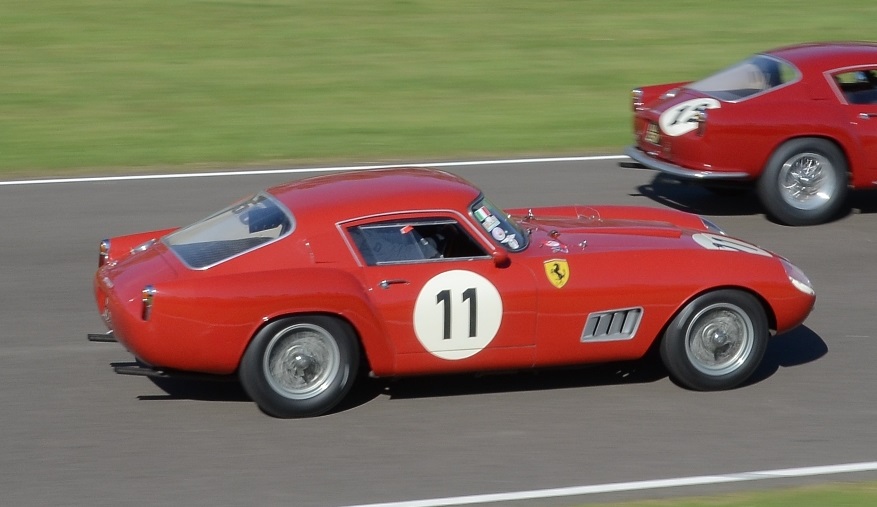-
Insurance
InsuranceAbout our productsLearn about insuringGet a quote Get current values, historical values, model history and more.
-
Valuation
ValuationHagerty valuation toolLook up a vehicle value Get current values, historical values, model history and more.
-
Events
EventsHagerty official eventsHagerty ClubhouseEvent calendar
-
Entertainment
EntertainmentMore to explore
- Portal login
1956 Ferrari 250 GT
TdF Coupe 3 L
Vehicle values by condition
Fair
Condition 4
£3,900,000
#4 cars are daily drivers, with flaws visible to the naked eye. The chrome might have pitting or scratches, the windshield might be chipped.
Good
Condition 3
£4,400,000
#3 cars could possess some, but not all of the issues of a #4 car, but they will be balanced by other factors such as a fresh paint job or a new, correct interior.
Excellent
Condition 2
£5,300,000
#2 cars could win a local or regional show. They can be former #1 cars that have been driven or have aged. Seasoned observers will have to look closely for flaws.
Concours
Condition 1
£6,200,000
#1 vehicles are the best in the world. The visual image is of the best car, unmodified, in the right colours, driving onto the lawn at the finest concours.
Insurance premium for a
1956 Ferrari 250 GT TdF Coupe 2953
valued at £4,400,000
£14992.07
/ year*
History of the 1956 - 1959 Ferrari 250 GT

1956 - 1959 Ferrari 250 GT
Enzo Ferrari never actually named his 250 GT of 1956 to 1959 the Tour de France. The public adopted the name after the model won four straight victories in the celebrated 3,600-mile race. In fact of all Ferrari’s series-produced berlinettas, none matched the competition record of the TdF, as it became known. Introduced at the 1956 Geneva Motor Show, this dual-purpose road/race model won more races than either of its successors, the Ferrari 250 GT SWB and Ferrari 250 GTO.
The TdF was designed by Pininfarina and built by Scaglietti in several variations. Fitted only with two-barrel carburetors, it was aimed at the new GT category, which the FIA hoped would be less dangerous than the rules which resulted in the 1955 Le Mans 24 Hours disaster.
The Ferrari 250 TdF’s competitive life began by winning the Giro di Sicilia in April 1956, and then first in class at the Mille Miglia. The Marquess Alfonso de Portago won the 1956 Tour de France, which was an eight day marathon designed to punish cars, drivers, navigators, and support crews alike with a series of hillclimbs, circuit races, and high speed rallies. In one day, entrants might face a timed hillclimb - usually on a gravel road, without any safety barriers - followed by a high-speed stage through daily traffic to get to a checkpoint. The next day could be a road rally, followed by a circuit race. Meanwhile, the support crew had to leapfrog ahead. After Portago’s success, Olivier Gendebien won the TdF in 1957, 1958, and 1959. He also scored a third overall in the 1957 Mille Miglia.
It is generally agreed there were four separate series of the Ferrari 250 TdF, which are most easily recognised by their vents on their sail, or C-panels. Of the 77 cars built, the first series of 14 had no louvres. Nine second series cars had 14 vents, followed by 18 cars in mid-1957 which had 18 vents. A final series of 36 cars in 1958 had only one vent on the sail panel.
Transition to the next model began in 1959, with modifications to the final 12 cars. Italian rules required that the headlamps could no longer be covered. Nine cars were so built, while the remaining three were export models with covered lights. In addition there are believed to have been five Zagato models built. As usual with Ferraris, the exact numbers are disputed and depend on the source.
The Ferrari 250 GT Tour de Frances were the swansong of the gentleman driver school of racing, where one left a five star hotel, drove to the track, won the race and returned to his dinner reservation. Almost all TdFs have thorough provenance, and values depend on that provenance. For the collector, there are few alternatives available - possibly the later Ferrari 250 GT SWB comes closest.
Hagerty Newsletter
Get your weekly dose of car news from Hagerty UK in your inbox

ADVERTISEMENT